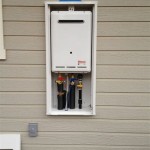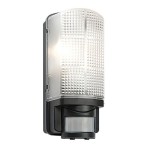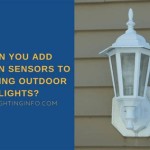Essential Outdoor Lighting Design Tips
Outdoor lighting is a crucial element of any landscape design, as it enhances safety, functionality, and aesthetic appeal. By implementing strategic lighting techniques, you can create a welcoming and inviting outdoor space while showcasing your property's best features.
Here are some essential outdoor lighting design tips to help you achieve a cohesive and effective illumination plan:
1. Determine Your Lighting Goals
Before selecting fixtures and planning your layout, it's essential to define your specific lighting objectives. Consider whether you prioritize safety and security, ambiance and mood, or a combination of both. This will guide your decisions regarding fixture types, light intensity, and placement.
2. Create Layers of Light
Incorporating multiple layers of lighting adds depth and interest to your outdoor space. Layer ambient lighting for general illumination, followed by task lighting for specific areas, such as walkways or seating areas. Accent lighting can then highlight focal points or draw attention to architectural details.
3. Choose the Right Fixtures
Select fixtures that complement the overall style of your home and landscape. For durability and weather resistance, opt for materials such as copper, bronze, or stainless steel. Consider the size and wattage of fixtures to ensure they provide adequate illumination without overpowering the space.
4. Plan the Placement Strategically
Carefully consider the placement of light fixtures to optimize functionality and aesthetics. Place fixtures along walkways and entrances for safety and security. Mount lights on walls or trees to accentuate architectural features or create dramatic shadows. Avoid placing fixtures directly next to windows to prevent glare indoors.
5. Consider Lighting Controls
Lighting controls provide flexibility and convenience, allowing you to adjust the intensity or color temperature of lights to suit different occasions or moods. Timer controls can automatically turn lights on and off at specific times, while motion sensors trigger lights when movement is detected, enhancing security and energy efficiency.
6. Illuminate Plants and Water Features
Highlight the natural beauty of your landscape by illuminating plants and water features. Use uplighting to create dramatic effects on trees and shrubs, while underwater lights can showcase ponds or fountains, adding a touch of enchantment to your outdoor space.
7. Avoid Light Pollution
Be mindful of light pollution by directing lights downward and using low-wattage bulbs. Excessive glare can disturb neighboring properties and disrupt natural ecosystems. Consider using shielded fixtures or timers to minimize light spillover.
8. Maintain Your Lighting System
Regular maintenance is essential to ensure your outdoor lighting system remains functional and efficient. Clean fixtures periodically to remove dirt and debris, and check bulbs and connections for any damage or loose wires. By maintaining your lighting system, you can extend its lifespan and keep your outdoor space illuminated in the years to come.

Outdoor Landscape Lighting Design Tips Ideas Environmental Designs

Designing A Landscape Lighting System Ideas Advice Lamps Plus

Landscape Lighting Design Overview

Outdoor Landscape Lighting Design Tips Ideas Environmental Designs

Designing A Landscape Lighting System Ideas Advice Lamps Plus

Expert Outdoor Lighting Design Tips 1000bulbs Blog

13 Outdoor Lighting Tips For A Safe And Inviting Landscape

Outdoor Lighting Design Tips Expert Ideas To Brighten Any Space

The Secret To Outdoor Lighting Turney And Electric

How To Buy Outdoor Lighting Planning And Design Tips Ideas Advice Lamps Plus
Related Posts








